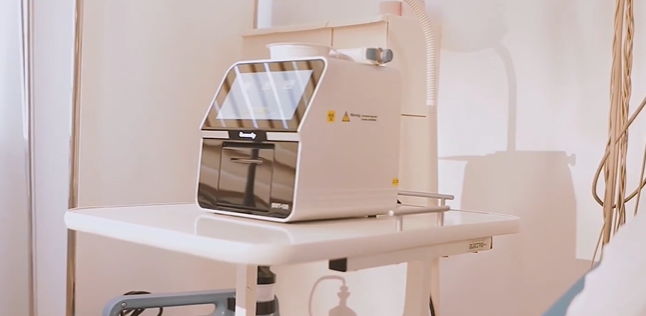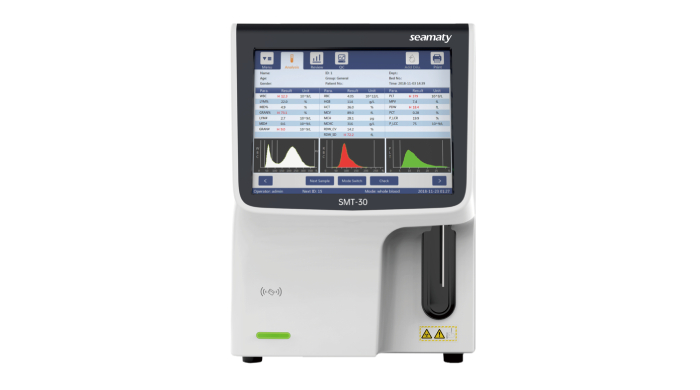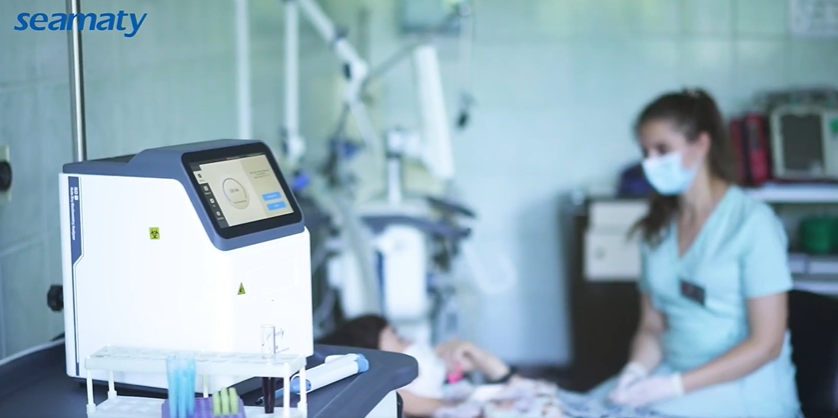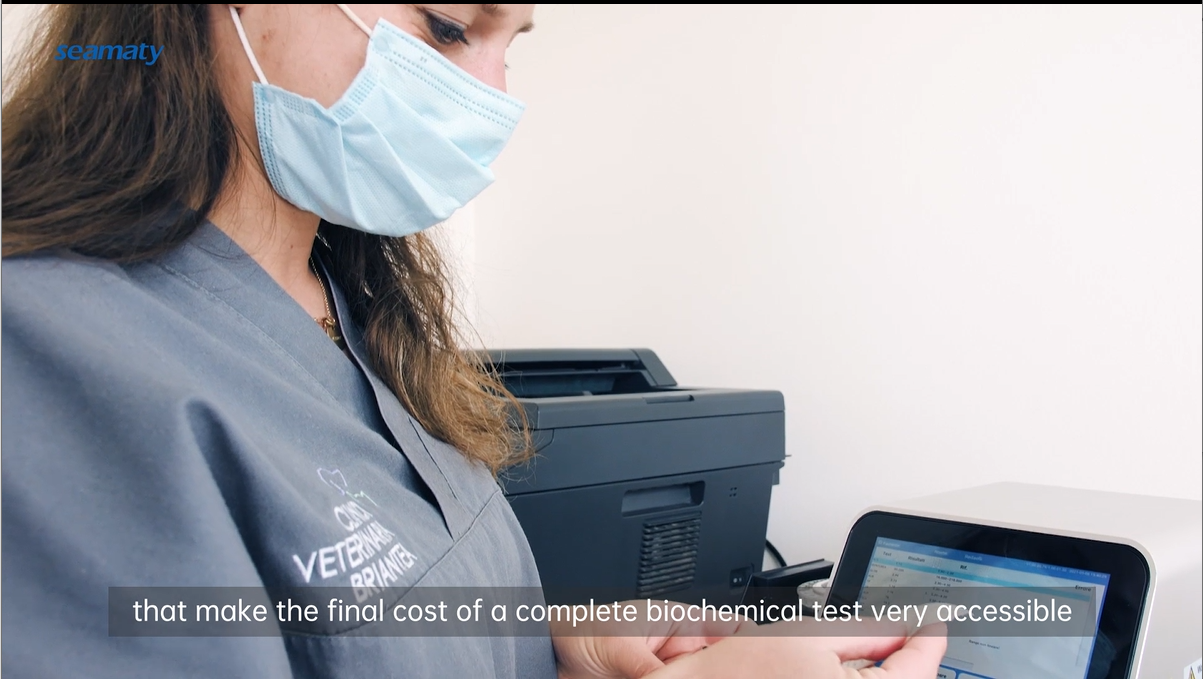Many people think that the laboratory is to put the specimen to the instrument, move a computer keyboard to get it done, there is no technical content. In fact, this is a misunderstanding of the laboratory department. In order to provide the clinic with an accurate test report, the laboratory physician must not only do a good job of indoor quality control, strict analysis of results, audit reports, but also to communicate with clinicians, improve the specimen pass rate, and do a good job of pre-test and post-test quality control. Therefore, an accurate
biochemical test report is not as simple as moving a keyboard.
How to review biochemical test results
In the daily work, many of the test doctors who have just entered the workplace will not review the biochemical test results. The following are a few biochemical test report card review of the common problems.
-
1. Not strong sense of responsibility, the results are not carefully reviewed
-
2. Not enough understanding of the test instruments and methodologies
-
3. Lack of professional knowledge, lack of work experience
-
4. Lhe instrument test results and indoor quality control results too believe
The audit of biochemical test results is the last gatekeeper for the quality of biochemical test results, and the work is of great significance. The audit work is good or bad, mainly determined by the following factors.
-
01 able to proficiently analyze the results of indoor quality control.
-
02 to test items used in test methodology has an in-depth understanding.
-
03 familiar with the performance and working principles of the instruments used to master.
-
04 to have a solid medical foundation, especially the knowledge of experimental diagnostics.
-
05 The mastery of pre-laboratory quality control is also very important.
The following is a specific description of the above points in the application of biochemical results audit process.
1. The biochemistry results auditor must be familiar with the day's in-house QC results and perform specific analysis.
It is important to ensure that all QC results are under control before reviewing the results. For the items under control, it is important to understand whether the QC value of the item is high or low relative to the target value, and to focus on the items that are close to the 2SD warning line.
For example, globulin results are generally calculated by subtracting the albumin value from the total protein value. This means that the globulin result is influenced by both total protein and albumin. If the total protein result is in control but high, and the albumin result is in control but low. The error in the globulin result will be the sum of the total protein and albumin errors, and it is likely that the globulin result will be higher and the albumin ratio will be inverted. This should be corrected during the audit process.
2. to test items used in the test methodology to have an in-depth understanding.
For example, when encountering creatine myokinase (CK) activity is less than creatine myokinase isoenzyme (CK-MB) activity requires a good use of knowledge of test methodology to analyze. The method used for the CK-MB test on the
automatic biochemistry analyzer is the immunosuppression rate method. That is, antibodies against creatine kinase-M subunit completely inhibit the activity of creatine kinase-MM, but do not affect the activity of creatine kinase-MB or B subunit on creatine kinase-BB.
Since creatine kinase-MB is composed of equal amounts of M subunit and B subunit. Thus, in the presence of antibodies against creatine kinase-M subunit, the measured activity of creatine kinase-MB should be 50% of the activity measured in the presence of antibodies without anti-creatine kinase-M subunit (the activity is ignored because of the minimal amount of CK-BB). The result multiplied by 2 is the CK-MB activity. Possible scenarios when CK-MB activity > CK activity are.
1) The activity of the creatine kinase M subunit is not completely inhibited by antibodies against the creatine kinase-M subunit because of the high level of CK-MM in the serum. A portion of the creatine kinase M subunit activity is also multiplied by 2 in the result calculation, making the test result high.
Solution: The specimen can be diluted and retested.
2) The antigenicity of CK is changed for various reasons (e.g., macro CKemia, etc.), causing antibodies against the creatine kinase-M subunit to fail to bind to the creatine kinase M subunit to form an antigen-antibody complex. This also prevents inhibition of creatine kinase M subunit activity. A portion of the creatine kinase M subunit activity is also multiplied by 2 in the result calculation, which skews the test result. In this case, the problem cannot be solved by diluting the specimen, and the clinician can only be informed as described above.
3. the performance and working principle of the instrument used (biochemical analyzer) should be familiar with.
With a large benchtop biochemical analyzer to take into account the order of placement of reagents to avoid the impact of the previous reagent residue on the later test items due to the reagent needle. Another example is if you find that all the results of the day are low, or all the results after a certain time are low, then consider whether the occurrence of the sample needle side blockage of the instrument, or sample needle syringe leakage. Retest all specimens after solving the problem.
4. to have a solid medical foundation and knowledge of "laboratory diagnostics", which is extremely important.
Because in the review of biochemical test results, determine whether the test results are consistent with the patient's pathology, physiological conditions are to be skilled in the use of experimental diagnostics knowledge. This can prevent the influence of accidental errors of the instrument on the test results. The results do not meet the pathology, physiological situation can be retested to exclude the accidental error of the instrument.
5. The quality control before the experiment is done by the clinical department. The completion of this process directly affects the quality of testing in the later stages of the laboratory.
If the quality of the pre-laboratory is not well controlled, then there is no way to make up for it later in the laboratory. So there is only one way to deal with this kind of problem, is to ask the clinical re-collection of specimens in accordance with the provisions of pre-laboratory quality control.
So how to find such problems in the process of reviewing biochemical results? This requires a comprehensive analysis using all of the knowledge presented earlier. If you suspect that there is a problem with pre-laboratory quality control, you should communicate with the clinical department to find out the reason for the loss of control.
For example, it is found that the test results are all low except for the increase of Na+ and Cl- ions, and the specimen has more serum, lighter color and fewer blood cells. This could be caused by blood collection on the ipsilateral limb of the infusion. Another example is the finding of very low results when blood glucose is tested by oxidase method. At this point, one can wonder if the clinic has applied drugs with reducing properties to the patient, such as vitamin C.
In practice, it is often necessary to combine the above knowledge in order to correctly analyze the test results, identify the causes of inaccuracy and deal with them. Because of the many factors affecting the test results, the results measured by the biochemical instrumentation may not all conform to the objective, and must be added to the subjective judgment of the examiner. When necessary to understand the patient's situation to the clinical, can not be completely double-blind principle for the issuance of the report.
When the clinic has doubts about the test results, the answer should not simply be "this is the result of the instrument". Instead, we should review the test process and, when we are convinced that the specimen came to the laboratory with no problems, we should actively analyze the reasons together with the clinic. Also, provide the clinician with all pre-laboratory factors that may affect the results. And to discuss together the pathological and physiological conditions that may have the result.



